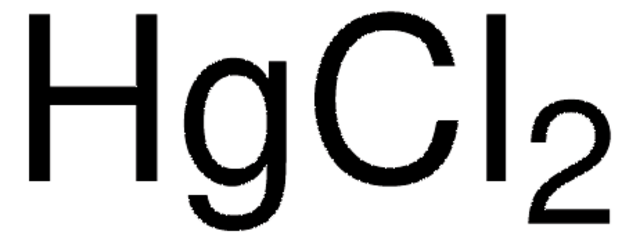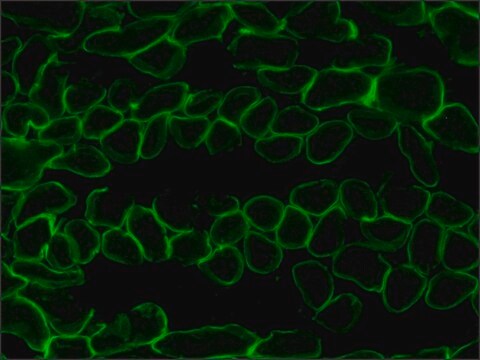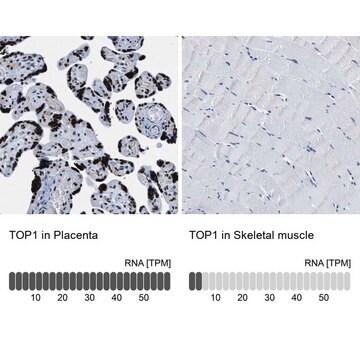M1136
Mercury(II) chloride
ReagentPlus®, 99%
Sinônimo(s):
Mercuric chloride
About This Item
Produtos recomendados
grau
reagent
pressão de vapor
1.3 mmHg ( 236 °C)
linha de produto
ReagentPlus®
Ensaio
99%
Formulário
powder
adequação da reação
reagent type: catalyst
core: mercury
pf
277 °C (lit.)
cadeia de caracteres SMILES
Cl[Hg]Cl
InChI
1S/2ClH.Hg/h2*1H;/q;;+2/p-2
chave InChI
LWJROJCJINYWOX-UHFFFAOYSA-L
Procurando produtos similares? Visita Guia de comparação de produtos
Categorias relacionadas
Descrição geral
Aplicação
It may be used as a catalyst for the addition reaction between aromatic amines and terminal acetylenes. It may also be used in the synthesis of [(HgCl2)2(HgCl2)(2-bppt)]n where 2-bppt= bis[4-(pyridine-2-yl)pyrimidin-2-ylthio]methane.
It assists in the following reactions:
- Cyclization of amidinothioureas with phenyl hydrazine to afford 3-amino-1,2,4-triazole derivatives.
- Cyclization-rearrangement of O-propargyl glycolaldehyde dithioacetals leading to the formation of 3-pyranones.
- Reductive dimerization and cyclization of α,β-unsaturated ketones to generate 3,4-trans-diarylcyclopentanols.
Qualidade
Informações legais
Palavra indicadora
Danger
Frases de perigo
Declarações de precaução
Classificações de perigo
Acute Tox. 2 Oral - Aquatic Acute 1 - Aquatic Chronic 1 - Muta. 2 - Repr. 2 - Skin Corr. 1B - STOT RE 1
Código de classe de armazenamento
6.1B - Non-combustible acute toxic Cat. 1 and 2 / very toxic hazardous materials
Classe de risco de água (WGK)
WGK 3
Ponto de fulgor (°F)
Not applicable
Ponto de fulgor (°C)
Not applicable
Escolha uma das versões mais recentes:
Já possui este produto?
Encontre a documentação dos produtos que você adquiriu recentemente na biblioteca de documentos.
Nossa equipe de cientistas tem experiência em todas as áreas de pesquisa, incluindo Life Sciences, ciência de materiais, síntese química, cromatografia, química analítica e muitas outras.
Entre em contato com a assistência técnica











